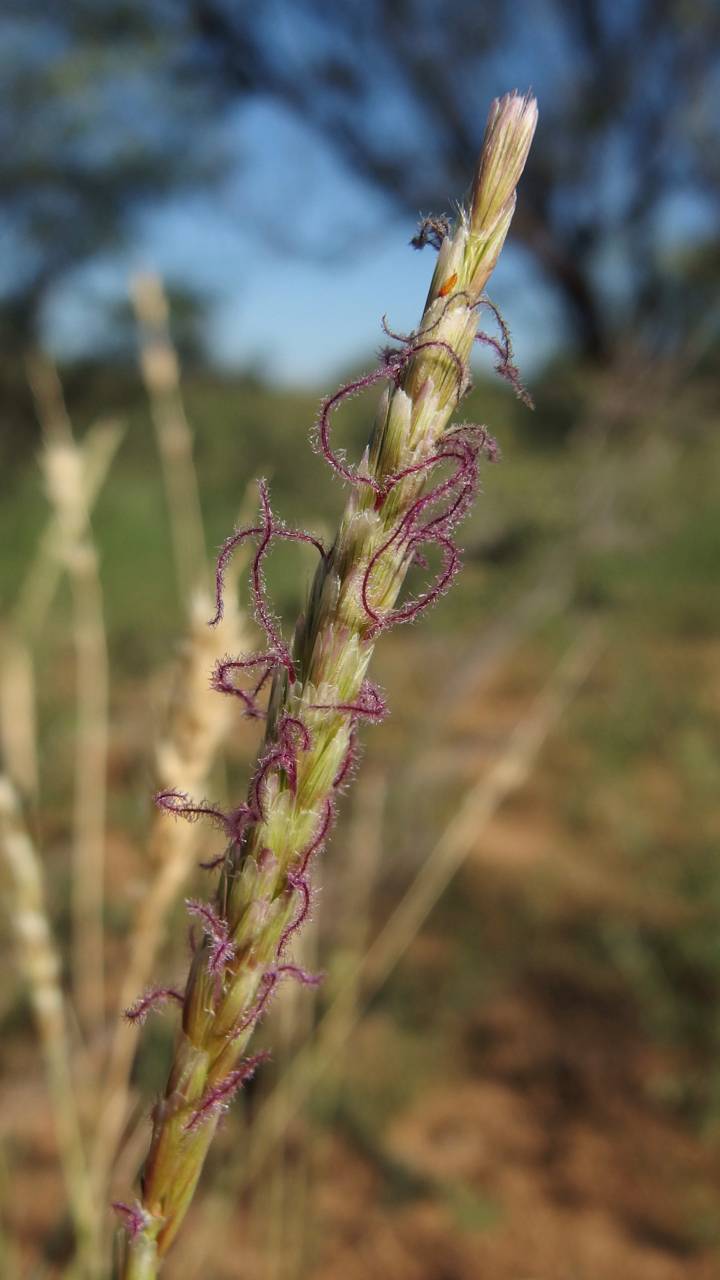Hilaria
|
Family: Poaceae |
Plants perennial or annual; tufted or cespitose, sometimes stoloniferous, perennial species sometimes rhizomatous. Culms 5-250 cm, erect or decumbent; nodes usually villous or pilose, particularly the upper nodes. Sheaths open, glabrous or pilose, lower sheaths often glabrous basally and pilose distally, margins sometimes villous or pilose, upper sheaths often glabrous even if the lower sheaths are pilose; ligules 0.5-5 mm, membranous, lacerate or ciliate. Inflorescences terminal, spikelike panicles of reduced, disarticulating branches, exceeding the upper leaves; branches with 3 spikelets, appressed to the rachises, bases straight, seated in a ciliate, cuplike structure, sometimes with a 0.5-2 mm callus, calluses pilose, axes not extending past the distal florets; disarticulation at the base of the branches, leaving the zig-zag rachises. Lateral spikelets of each branch shortly pedicellate, with 1-4(5) sterile or staminate florets; glumes almost as long as the florets, deeply cleft into 2 or more lobes, with 1 or more dorsal awns; lemmas membranous, hyaline. Central spikelets sessile, with 1 pistillate or bisexual floret; glumes shorter than the florets, rigid, indurate and fused basally, apices with 2 or more lobes; lemmas membranous, awned or unawned. x = 9. Named for Auguste François César Prouvençal de St.-Hilaire (1779-1853), a French explorer, botanist, and entomologist. |

